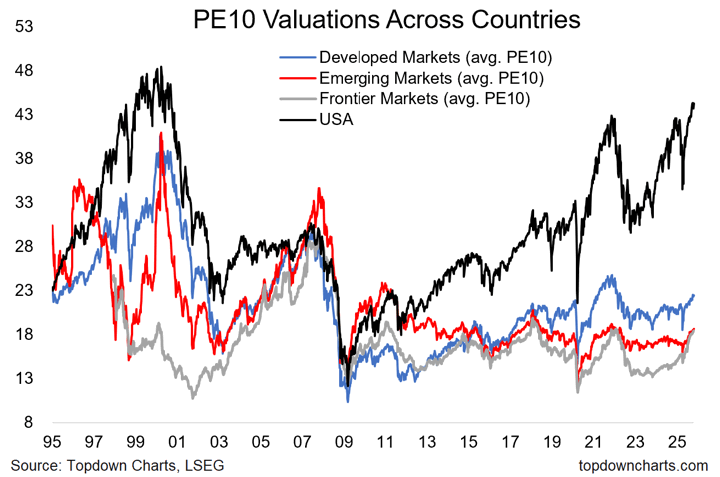Welcome to Phase 3!
As I mentioned in a recent Extreme Fortunes update, the AI era has been moving through three distinct phases.
Phase 1 was the infrastructure build-out, which led to incredible gains in stocks like Nvidia.
Phase 2 is the implementation, which has been amazing for software companies like Palantir.
Now, Phase 3 is beginning…
And I believe this will be the most exciting one yet.
Because this is where established industries use AI to create huge margin improvements and disruptive breakthroughs.
Today I want to take a look at some companies that are already moving into this third phase, so we can see how they point us to a surprising pattern…
AI Phase 3 In Plain Sight
One clear example of a company moving into AI’s Phase 3 is Walmart.
In January, it sold its robotics unit to Symbotic, while agreeing to fund a $520 million program to enhance online pickup and delivery options at its stores.
If Symbotic hits its goals, Walmart will install this system in 400 pickup-and-delivery hubs.
This means that instead of workers walking through store aisles to grab items, AI-guided robots in the back of the store will do the picking.
AI is also used to help route orders and schedule fulfillment, which lowers the labor hours per order and speeds up pickup times.
With Symbotic’s system, more orders can shift to curbside pickup or ship-from-store. This makes delivery cheaper and avoids parcel fees on pickup orders.
The net effect of these AI upgrades is faster service and a lower cost per order, without having to expand the number of stores Walmart already has.
Sam’s Club is another company that’s already benefiting from AI.
Instead of having workers scan carts and check receipts as members walk out, the company has moved to cameras and computer vision for its exit process.
This new system frees workers to stock shelves or help on the floor. Meanwhile, members leave 23% faster.
Faster flow plus fewer paid minutes at the door means a lower cost per visit, which means this AI system saves Sam’s Club money and lifts throughput at the same time.
But AI isn’t just enhancing the retail experience.
American Airlines is using it to fix trips during bad weather.
In June, the company began testing a new chat assistant that lets customers rebook through its app or website when delays or cancellations hit.
By mid-July, American said this AI tool had already helped more than 200,000 travelers during major East Coast storms.
It also says a new AI “flight-hold” system has saved thousands of missed connections by briefly holding certain departures at big hubs like Dallas–Fort Worth and Charlotte so they won’t ripple through the schedule.
Fewer missed connections and faster self-service rebooking mean fewer calls, lower hotel and voucher costs and more kept tickets.
It’s a win-win for the company and for consumers.
And AI is also proving to have many practical applications in the Healthcare sector.
According to the FDA, 211 AI-powered medical devices received clearance or authorization since September of last year…
While ambient AI scribes are freeing clinician time in the exam room.
A 2025 study found that these hands-free note-takers make doctors more efficient, with an average of up to 5 minutes saved per encounter.
That’s enough to open up roughly 13 extra visit slots per provider per month in some busy clinics.
It’s a huge time saver.
And when you add robots to the mix, you can really see how AI is transforming industries.
Take the partnership between American grocer Kroger and the U.K. grocery-automation technology company, Ocado.
At Ocado’s Luton site in England, AI-guided robotic arms now pack about 40% of orders, and this number could move toward 80% as new grippers roll out.
This shifts more picking to machines, which cuts walking time for workers and raises picks per hour.
The result is more orders per hour and a lower cost per order.
And now those same gains have crossed the Atlantic. Kroger has eight Ocado-powered Customer Fulfillment Centers up and running in the U.S., with plans for two more in Charlotte and Phoenix for 2026.
Shipping company DHL is leaning into robotics too.
In May, it signed a memorandum with Boston Dynamics to deploy more than 1,000 Stretch robots across its network.
Source: Boston Dynamics
Stretch does one job very well: it rolls into a trailer, grabs boxes with a suction arm and drops them on the conveyor.
That’s great news for human workers because trailer unloads are hot, repetitive, injury-prone work.
In live sites, Stretch has moved up to 700 boxes an hour. At that rate, a 1,400-case trailer empties in about two hours.
A solid human crew needs roughly twice as much time to do the same job.
Those two hours saved cut both overtime and injuries. It also enables warehouses to push out more volume without adding more doors.
This lowers unit costs and smooths peak weeks.
But that’s nothing compared to what Amazon has done with its AI assisted robots.
Analysts estimate that its new generation of robotics-led fulfillment centers deliver about a 25% cost improvement at peak.
Morgan Stanley pegs potential annual savings at roughly $10 billion by 2030 as more volume runs through these sites.
Yet Amazon says its 750,000 strong robot fleet is still expanding.
Do you see the pattern emerging from all of these AI-driven upgrades?
Retailers are using AI to turn stores into small fulfillment nodes.
Airlines are letting AI-driven software recover disrupted trips before a call center gets involved.
Hospitals are cutting clerical time while the FDA clears more AI into the workflow.
And logistics firms are using AI to increase efficiency and lower costs.
Yet we’re still in the very early stages of AI Phase 3…
Here’s My Take
I believe the next wave of the AI rally is coming…
But Phase 3 is going to hit a little different.
It’s going to be a steady drumbeat of thousands of small AI-driven deployments that add up to a new baseline for productivity. These steady improvements could keep the market buoyed for a while.
But I’ll keep a close watch for companies that are fixing bottlenecks the market is currently ignoring…
Because those outliers could lead us to some of the most explosive gains.
Regards,
Ian King
Chief Strategist, Banyan Hill Publishing
Editor’s Note: We’d love to hear from you!
If you want to share your thoughts or suggestions about the Daily Disruptor, or if there are any specific topics you’d like us to cover, just send an email to [email protected].
Don’t worry, we won’t reveal your full name in the event we publish a response.
So feel free to comment away!
Disclaimer: This story is auto-aggregated by a computer program and has not been created or edited by finopulse.
Publisher: Source link








